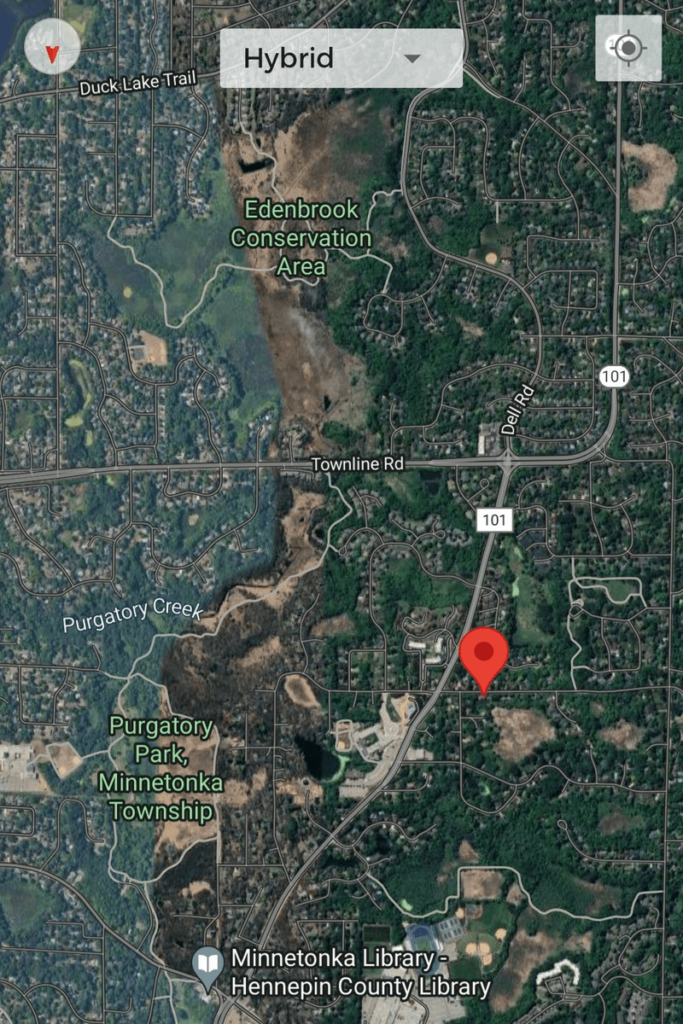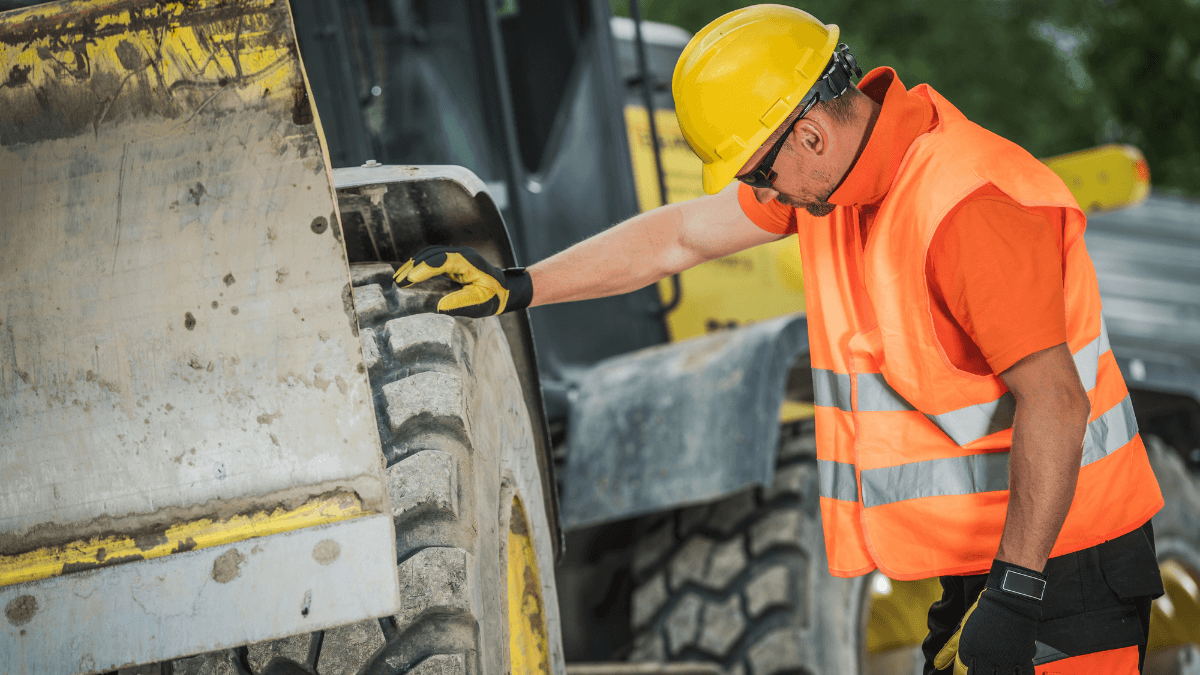Are you keeping up with your industry’s trends?
The equipment rental landscape is evolving faster than ever, and businesses need to adapt quickly to retain old customers and engage new prospects.
If you’re in the construction equipment rental business, following trends is one way of staying on top of the game, and that’s exactly what we’re focusing on in this article.
Join us for a deep dive into key trends that boost efficiency, strengthen customer relationships, and drive profit!
In this article...
Embracing the Equipment-as-a-Service (EaaS) Model
Businesses look to minimize the risks of equipment ownership, and the Equipment-as-a-Service (EaaS) model takes this a step further.
And judging by the 2023 EaaS market revenue shared by Grand View Research, construction companies are fully on board with this change.

So what helped draw in 1.5 billion in revenue, while producing such high CAGR forecasts?
Simply put, EaaS solutions offer a degree of certainty and flexibility that’s impossible to come by with a typical rental agreement thanks to its pay-as-you-go (PAYG) pricing model.
In other words, renters would receive invoices based on equipment usage, rather than fixed monthly or hourly charges.
One of the pioneers of the EaaS model, Volvo Construction Equipment (Volvo CE), highlights three key benefits this brings to customers:
- financial freedom,
- cost-effective use
- flexibility.
With the general volatility of the construction industry, more and more construction firms look to expand their operations while having total control of the costs and project execution.
However, the benefits of the EaaS model shine through value-added services, as outlined in Volvo CE India’s short clip.
Basically, if you have a dedicated team of experts who are taking full care of equipment maintenance and unexpected repairs, customers can focus on core construction work.
The importance of convenience is also highlighted by Matthew Hudson, Managing Director and Head of Equipment-as-a-Service within Houlihan Lokey‘s Business Services Group.

The usage-based model brings alignment with the business in need of rental equipment, thereby laying down the foundations for increased utilization and productivity, which translates to better outcomes and increased customer satisfaction.
Improving Sustainability
Equipment rental companies are putting more focus on implementing sustainability measures and expanding their offer with green rental equipment.
Since renting is already a sustainable practice at its core, why invest more time and effort into improving sustainability?
On one hand, there are reputational concerns.
Nowadays, neglecting sustainability separates you from your peers, and not in a good way.
The opposite is equally true, so turning your attention to sustainability serves to strengthen reputation.
One way of communicating this commitment is by following ESG standards and initiatives, which are meant to ensure that companies keep in mind their impact on the environment, the overall society, and on good governance.
For example, US-based equipment rental firm H&E Equipment dedicated a section of their website to ESG, presenting their overall approach by stating clear sustainability measures.

In this way, H&E is not only bringing in customers who share their sustainability-oriented approach, but directly advertising its eco-friendly or green equipment options.
Some common features of green rental equipment include electric or hybrid models, eco-friendly fuels, and emission control which help minimize ecological footprint, and ensure compliance with environmental regulations.
Nevertheless, energy efficiency and resource conservation are highlighted by both H&E and Green Rental Equipment for a very compelling, cost-effective reason.

Different asset-tracking technologies enable automation and sustainable maintenance programs, allowing you to reduce fuel use and idle time, but also extend the lifespan of your equipment.
All of this results in a huge efficiency boost and cost savings.
Moreover, by prioritizing efficient maintenance and regular servicing, companies create a foundation for further equipment recycling and refurbishment initiatives.
Still, you’ve got to start from the beginning, right?
Eric Oliver, the Founder of Earthwide LLC, an energy and environmental efficiency consulting company, explains that the first step is to assess your carbon footprint.

Only once you have the baseline can you move on to considering alternatives for your consumables or look for ways to reduce emissions.
Bottom line is: improving sustainability benefits companies in several areas, from enhanced operational efficiency to building a stronger reputation for your equipment rental businesses.
Implementing Asset Tracking Technologies
More and more companies want to have greater control over their equipment.
By using asset-tracking technologies, they can do so.
And we’re not talking about having the asset’s approximate location entered in some Excel spreadsheet.
Together, technologies like telematics and QR-coded labels expand tracking capabilities, enabling you to see rental equipment’s location, status, and usage in real-time.

Equipment rental businesses have the inherent need to monitor their assets remotely, and that’s precisely what telematics deliver, in combination with tracker devices.
Meanwhile, QR codes enable quick status and location updates, which makes them a crucial component of seamless check-in/check-out systems.
The resulting wealth of insights and data paves the way for better operational efficiency.
The biggest advantage of tracking technologies is the visibility and control you gain over your entire fleet and inventory.
Whether you’re tracking your largest, most valuable machinery or non-powered tools and specific parts, asset-tracking solutions ensure that everything is accounted for at all times.
Let’s illustrate that using our GoCodes Asset Tracking software as an example.
Having a comprehensive online database of all assets means you can quickly find everything you need to know about a specific piece, from its rental status to last service notes.

The unique ID number and easy access to the entire edit history ensure there are no mix-ups, and a total overview helps prevent or address theft and loss.
This advanced technology is a strong theft deterrent in itself, but in cases when assets are stolen, installed telematics and GPS tracking devices can instantly pinpoint their location and make retrieval possible.
You can access the asset’s updated location on different devices, including your phone, and quickly get in touch with the renter and law enforcement.

What’s more, cutting-edge software solutions like GoCodes Asset Tracking integrate powerful geofencing features that allow you to set up virtual security perimeters and receive an alert as soon as your equipment leaves the designated location.
Whether you’re managing day-to-day rental operations or handling unexpected events, the benefits of enhanced, real-time visibility are undeniable, which is why this technology adoption trend will continue in the future.
Keeping Up With Global Supply Chain Dynamics
The COVID-19 pandemic gave rise to longer lead times and decreased equipment availability, which would later cause many business owners to resort to equipment renting.
However, owners and managers of equipment rental companies face similarly challenging supply chain dynamics today.
To tackle these challenges, they rely on different strategies; from placing bigger orders ahead of time, reaching out to alternative suppliers, or stocking up on parts, as shared by “Big L Rentals and Sales” Ben Blood.

Traditionally, supply chain management advice boils down to early identification of needs and flexibility in the procurement process.
For equipment rental businesses it’s much the same, except that the key is to link predictive data on maintenance with strategic supply chain planning and part-specific lead times.
What exactly does this mean?
Well, if you were to have precise data on the state of all your equipment you’d be able to pinpoint when different operational components and replacement parts would be needed.
Predictive maintenance yields insights that go beyond preventive maintenance, enabling businesses to reduce breakdowns by 70 to 75% according to a US Department of Energy report and save significantly.

However, maintenance strategy should also integrate supply chain insights, most notably part-specific lead times.
You can look up publicly available data to view historic insights on lead times and even feed it to certain tools that forecast demand.
With the key data linked, longer wait times for equipment and parts will be a thing of the past, thereby helping you retain and attract new customers and meet their demands.
Building a Presence On Online Rental Platforms
Advertising your equipment on online rental platforms is more important than ever.
Equipment rental companies have different channels and strategies for getting exposure and reaching their target audience, but turning to popular online rental hubs means quick access to thousands of people interested in renting construction equipment.
Think about advertising your rental equipment on platforms with millions of monthly website visitors, such as Equipment Trader.

With nearly 980,000 monthly visits on average, this website puts your offer in front of a big audience, promising more rental deals.
According to the Research and Market forecasts for the North American equipment rental market, various factors are propelling the demand for rentals, including the steep prices of new construction equipment and the residential construction boom.
Online advertising has been a part of the solution to satisfy this growing demand for a couple of years because of its numerous benefits, and on your end, these include:
- Large pool of potential customers actively seeking equipment rentals
- Brand visibility boost
- Simplified rental process through streamlined booking and secure payment
- Verification and equipment insurance options
Concluding deals with peace of mind, and avoiding theft, fraud, and damages, is one of the big selling points for online rental platforms, and US construction equipment rental giant DOZR is no different.

It works both ways, so trusty verification processes and insurance options also bring in customers who would otherwise trust only word of mouth.
To sum up, online equipment rental platforms offer visibility, convenience, and safety, making equipment renting hassle-free and cost-effective.
Creating a Better Customer Experience
Convenience and cost savings play a huge role in finalizing the first rental deal, but customer experience is what gets you repeat customers.
Especially in a highly competitive market.
As such, investing in better customer experience is rightly seen as the tipping point, and is predicted to become the focus of more and more equipment rental companies.
We can explore the customer experience efforts along two main points: experience before the renting starts and during it.
To start off, streamlining your rental process often means automating invoicing procedures or providing fast and convenient delivery options, but it boils down to offering:
- instant quotas,
- equipment delivery,
- additional services, and
- personalization.
Many of these points tie in directly to building websites that are tailored for equipment rental or integrate e-commerce functionalities.
Having a dedicated e-commerce store, for example, would make it easy for your customers to move directly to payment after they’ve finished browsing the equipment.
Nevertheless, what happens after the deal is sealed is even more important.
Good customer relationship management makes all the difference, and it involves everything from finding ways to reward regular renters to continuously providing customer-centered support.
And going the extra mile pays off.
Bryan Peters, President of AdvanceTrac Equipment which specializes in heavy equipment rentals, explains why companies should offer more than an invoice specifying hours of use.
By providing their customers with equipment utilization data, AdvanceTrac empowers them to make the best possible decisions regarding their rental.

Rather than pushing for longer rental periods whenever possible, enabling the customer to make an informed decision helps establish trust.
Building this sort of trust with your customers helps them view their rental agreement with you as a mutually beneficial partnership that should be nurtured for a longer time.
Conclusion
The trends in construction equipment rentals are transformative for your business in more ways than one.
Asset-tracking technology and predictive analytics help optimize several rental processes, creating the basis for better supply-chain and maintenance decisions.
Meanwhile, you can turn to online rental platforms for more visibility and better reach, while exploring the EaaS model and sustainability initiatives to build stronger customer relationships.
Whichever direction you prioritize, you don’t want other businesses catching up, so the time to act is now!






